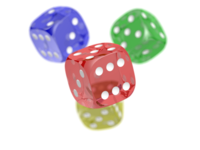
Photo from wikipedia
ABSTRACT Diagnostic assistance using mobile technology is instrumental to timely and adequate care in resource-scarce settings, particularly for acute burns. Little is known, however, as regards to how remote diagnostic… Click to show full abstract
ABSTRACT Diagnostic assistance using mobile technology is instrumental to timely and adequate care in resource-scarce settings, particularly for acute burns. Little is known, however, as regards to how remote diagnostic consultation in burns affects the work process. This article reviews a doctoral thesis on this topic based on four studies conducted in the Western Cape, South Africa prior to and in a very early phase of the implementation of an app for burn remote diagnostic assistance. The aim was to increase knowledge on how remote diagnostic assistance for burn injuries can influence the role and work of medical experts in a resource-poor setting. The congruence model was used as a reference framework to study the ‘input’ (study 1), ‘tasks’ (studies 2 and 3) and ‘people’ (study 4) involved. The results show higher burn incidence in young children (75.4 per 10 000) and gender differences primarily among adults. The quality of images was considered by experts as better when viewed on smartphones and tablets than on computers. The accuracy of burn size assessments was high overall but low for burn depth (ICC = 0.82 and 0.53 respectively). Experts described four positions pertaining to remote consultations: clinical specialist, gatekeeper, mentor and educator. They perceived images as improving accuracy of consultation and stressed the need for verbal communication among clinicians during critical situations. In conclusion, experts are satisfied with the quality of images seen on handheld devices and can accurately assess burn size using these, yet burn depth assessment is more challenging without additional clinical information. mHealth for diagnostic assistance can benefit current image-based consultation by systematising information quality, introducing enhanced security and improved access to experts. Remaining challenges include the necessity of verbal communication in some instances and replacing existing informal organisational practices.
Journal Title: Global Health Action
Year Published: 2020
Link to full text (if available)
Share on Social Media: Sign Up to like & get
recommendations!